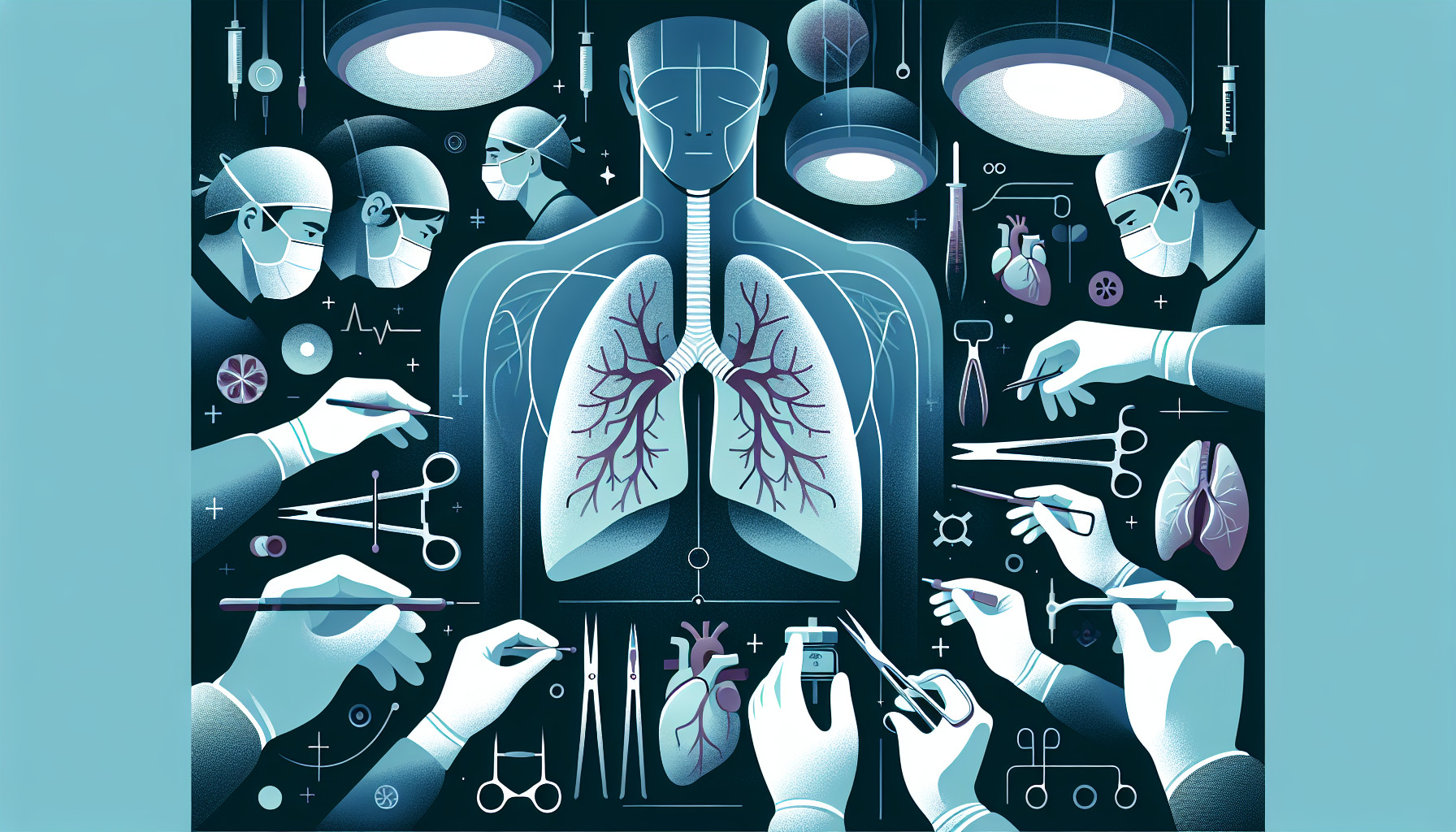Our Summary
This research paper focuses on lung transplantation, a procedure that can significantly improve the quality of life and increase the lifespan of people suffering from severe lung disease. It highlights the advancements made in this field over the past few years, both in terms of the understanding of the procedure and its practical application. However, it also acknowledges the challenges that still exist in improving the survival rate after the transplant. These include preparing patients for the transplant, finding suitable lung donors, ensuring that the patient’s body accepts the new organ, and preventing complications after the transplant. These complications can range from the failure of the new organ to various types of rejection by the patient’s body, long-term dysfunction of the transplanted lung, and infections. The paper aims to examine the latest developments and ongoing progress in lung transplantation.
FAQs
- What is the purpose of a lung transplant and how can it improve quality of life?
- What are some of the challenges faced post-lung transplant and how are they being addressed?
- What are the recent and evolving advances in the field of lung transplantation?
Doctor’s Tip
One helpful tip a doctor might tell a patient about lung transplant is to closely follow your medication regimen as prescribed. This includes taking immunosuppressant medications to prevent rejection of the transplanted lung. It is important to take these medications consistently and on time to ensure the success of the transplant and prevent complications. Additionally, maintaining a healthy lifestyle with regular exercise and a balanced diet can also help improve outcomes after lung transplant surgery.
Suitable For
Patients who are typically recommended for lung transplant are those with end-stage lung disease who have exhausted all other treatment options and have a significantly decreased quality of life. This includes individuals with conditions such as chronic obstructive pulmonary disease (COPD), idiopathic pulmonary fibrosis, cystic fibrosis, pulmonary hypertension, and bronchiectasis. Patients must also meet specific criteria for lung transplant eligibility, including being medically stable enough to undergo surgery and having a good support system in place for post-transplant care. Additionally, patients must undergo a thorough evaluation process by a transplant team to determine their suitability for transplant and to assess their overall health status.
Timeline
Before lung transplant:
Diagnosis of end-stage lung disease: Patients with severe lung conditions such as chronic obstructive pulmonary disease (COPD), cystic fibrosis, idiopathic pulmonary fibrosis, or pulmonary hypertension are evaluated by a medical team to determine if they are candidates for a lung transplant.
Evaluation and testing: Patients undergo a series of tests and evaluations to assess their overall health and determine if they are suitable candidates for a transplant. This includes physical exams, blood tests, imaging studies, pulmonary function tests, and psychological evaluations.
Waiting for a donor: Once listed for a lung transplant, patients must wait for a suitable donor match to become available. This waiting period can vary in length and can be emotionally and physically challenging for patients and their families.
After lung transplant:
Surgery: Once a suitable donor match is found, the patient undergoes lung transplant surgery. The damaged lungs are removed and replaced with the healthy donor lungs. The surgery can take several hours and requires a team of highly skilled surgeons and medical professionals.
Recovery and rehabilitation: After surgery, patients are closely monitored in the intensive care unit (ICU) and then transferred to a regular hospital room for recovery. Physical therapy and rehabilitation are important components of the recovery process to help patients regain strength and mobility.
Immunosuppression and follow-up care: Patients must take immunosuppressant medications for the rest of their lives to prevent rejection of the donor lungs. Regular follow-up appointments with their transplant team are necessary to monitor for signs of rejection, infection, and other complications.
Improved quality of life: For many patients, a lung transplant can greatly improve their quality of life by restoring their ability to breathe more easily and engage in activities they were unable to do before. However, ongoing medical care and monitoring are essential to ensure the long-term success of the transplant.
What to Ask Your Doctor
Some questions a patient should ask their doctor about lung transplant include:
- Am I a candidate for a lung transplant? What are the specific criteria for eligibility?
- What is the success rate of lung transplants at this hospital or transplant center?
- What are the potential risks and complications associated with a lung transplant?
- How long is the waiting list for a lung transplant, and how will I be prioritized?
- What is the recovery process like after a lung transplant? How long will I need to stay in the hospital?
- What medications will I need to take after the transplant, and what are the potential side effects?
- How often will I need to follow up with my transplant team after the surgery?
- What lifestyle changes will I need to make after the transplant to ensure the best possible outcome?
- What support services are available for lung transplant recipients, such as counseling or support groups?
- What is the long-term outlook for someone who undergoes a lung transplant?
Reference
Authors: Meyer KC. Journal: F1000Res. 2018 Oct 23;7:F1000 Faculty Rev-1684. doi: 10.12688/f1000research.15393.1. eCollection 2018. PMID: 30416706
